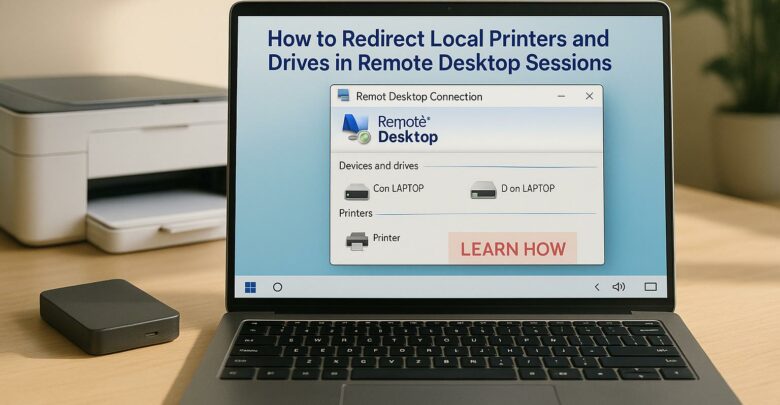
Learn how to effectively redirect local printers and drives during Remote Desktop sessions for enhanced productivity and seamless remote work.
Explore Windows 10/11 virtual desktops
Real-World Applications of flexidesktop
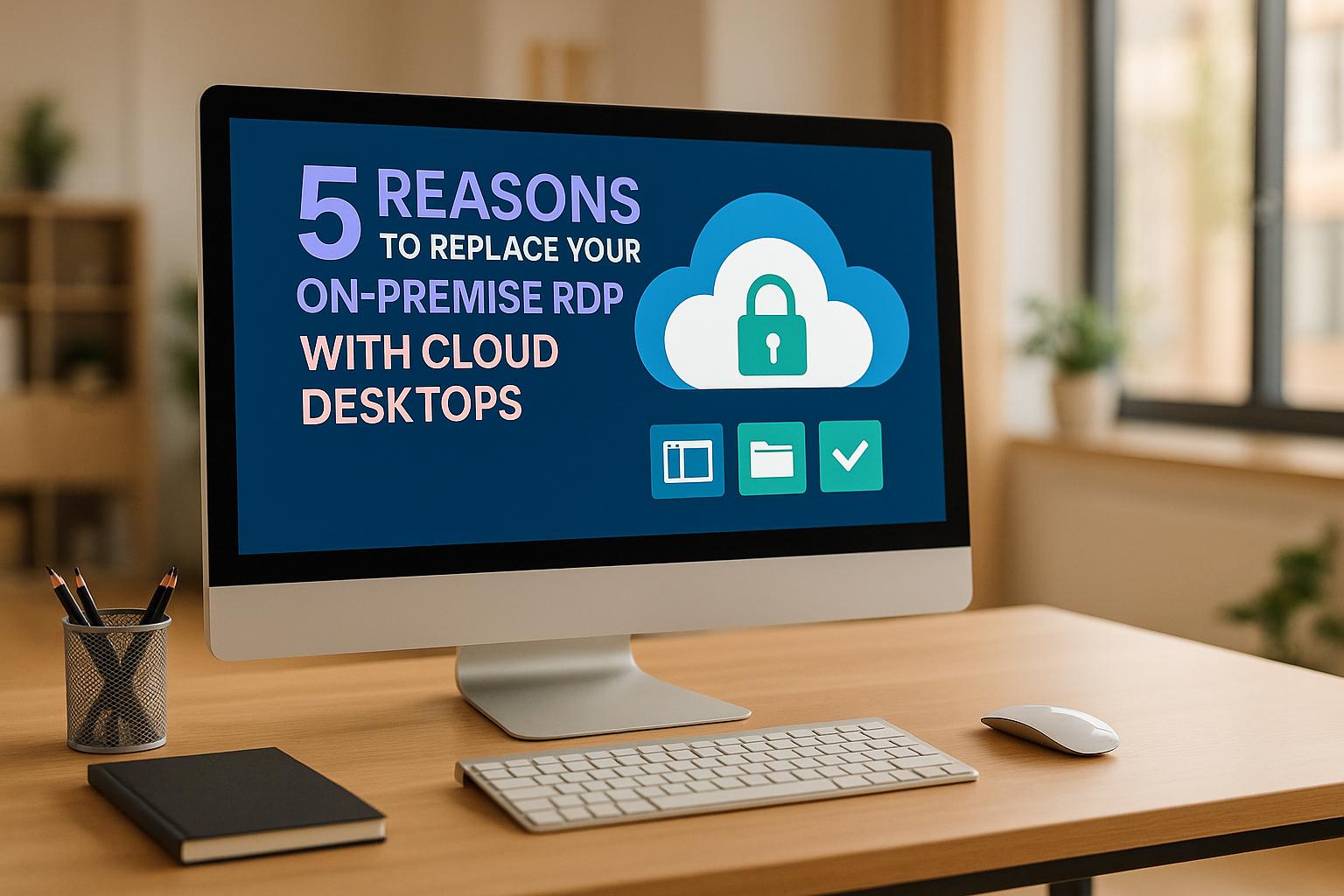
When it comes to remote work, on-premise RDP systems are falling behind. They’re costly, hard to scale, and vulnerable to cyberattacks. In contrast, cloud desktops offer a modern solution that’s secure, cost-effective, and easy to manage. Here’s why making the switch is a smart move:
Switching to cloud desktops eliminates the headaches of managing on-premise RDP systems while improving security, flexibility, and efficiency. It’s time to upgrade.
Traditional on-premise RDP systems come with serious security challenges. They’re often targeted by cybercriminals and typically lack the advanced protections needed to safeguard sensitive information. Cloud desktops, however, tackle these issues head-on by incorporating enterprise-level security features.
One major weakness of on-premise RDP setups is the absence of essential access controls. Many systems don’t include built-in multi-factor authentication, detailed session management, or robust access control measures. These gaps, coupled with the constant need for monitoring and patch updates, leave systems vulnerable to attacks.
Cloud desktop solutions address these concerns with features like end-to-end encryption, multi-factor authentication, granular role-based access controls, and comprehensive session logging. These tools not only enhance security but also provide detailed audit trails for tracking and compliance purposes.
For industries with strict regulatory requirements, such as healthcare, cloud desktops offer a clear advantage. They help organizations meet standards like HIPAA while ensuring sensitive data remains protected. Plus, cloud providers take care of tasks like patch management, firewall configurations, and regular security updates, reducing the burden on internal IT teams.
On-premise RDP setups can quickly become a financial headache. Between server hardware, Windows Server licenses, Remote Desktop Services CALs (Client Access Licenses), and ongoing maintenance, the costs add up fast. And that’s before factoring in additional expenses like power consumption, cooling systems, and IT labor for updates, troubleshooting, and hardware replacements. Even worse, unexpected hardware failures can blow a hole in your budget and disrupt productivity.
Cloud desktops, on the other hand, simplify everything with a subscription-based model. Instead of hefty upfront investments, you pay a predictable monthly fee. For instance, flexidesktop offers a basic Windows desktop starting at $19 per month, while a mid-tier setup (3 vCPU, 8GB RAM, 80GB SSD) costs $39 per month. These fees cover everything – hardware, licensing, power, cooling, and maintenance – shifting the responsibility for updates and hardware replacements to the cloud provider.
This approach makes budgeting a breeze. Rather than worrying about costly hardware refresh cycles every few years, you deal with consistent monthly expenses that scale with your needs. Need more desktops during a busy season? You can add users quickly. Once the demand drops, scale back without being stuck with unused hardware.
The cost benefits go hand in hand with flexibility. Cloud desktops make it easy to get new users up and running in minutes, ensuring your IT infrastructure grows at the same pace as your business.
On-premise RDP servers often face performance issues that cloud desktops can easily sidestep. Traditional office servers typically rely on aging hardware, limited cooling, and constrained network setups, which can slow things down. When too many users connect at once, the server’s CPU and RAM can hit their limits, bringing productivity to a crawl.
Cloud desktops, on the other hand, are built on infrastructure designed for speed and efficiency. These systems run on cutting-edge data centers equipped with high-speed NVMe SSDs (offering read speeds over 3,000 MB/s), powerful processors, and redundant network connections. The result? Faster application loading, quicker file transfers, and minimal lag, even during peak usage times.
Reliability is another area where cloud desktops shine. Most providers offer uptime guarantees of 99.9%, meaning less than 9 hours of downtime per year. Compare that to an on-premise server – where a hardware failure, power outage, or network hiccup can disrupt your entire team for hours or even days. When your office server goes down, you’re left scrambling to source replacement parts, arrange repairs, and restore backups, all while your team is stuck waiting.
Cloud systems are designed to avoid these pitfalls. They feature built-in redundancy and automatic failover capabilities. If one server in a data center fails, workloads are seamlessly shifted to another without users even noticing. Maintenance or unexpected issues don’t interrupt active sessions, thanks to the ability to migrate running desktops to different physical servers. This level of resilience simply isn’t possible with traditional on-premise RDP setups – when your office server fails, work grinds to a halt until the issue is resolved.
Cloud desktops also deliver a major upgrade in network performance. Data centers maintain multiple high-bandwidth internet connections from various providers, ensuring consistent and reliable connectivity. In contrast, your office internet connection – no matter how fast – is a single point of failure that can disrupt remote access for everyone. These technical advantages translate directly into smoother user experiences and improved productivity across your organization.
Traditional on-premise RDP servers can seriously limit a business’s ability to grow quickly. Sure, adding new users might only take a few minutes, but the process of acquiring additional hardware and setting it up can drag on for weeks – or even months. During this time, teams are left waiting, and onboarding new employees or accommodating seasonal workers becomes a logistical headache.
Cloud desktops eliminate these challenges entirely. Need to expand your team? Just log into your management dashboard, choose the configuration you want, and deploy new virtual desktops instantly. There’s no waiting for hardware shipments, no lengthy installation processes, and no complicated configurations. New employees can hit the ground running on day one, with fully prepared Windows environments that include all the necessary software and security settings.
But the benefits don’t stop at adding users. Cloud desktops offer the ability to scale resources up or down based on your needs. Physical servers, on the other hand, lock you into fixed hardware specifications – whether you’re using their full capacity or not. This makes cloud desktops especially appealing for businesses with fluctuating demands.
Take seasonal businesses, like tax firms, for example. During peak periods, they can scale up high-performance desktops to handle the workload, then scale back down during quieter months. With on-premise RDP setups, they’d either have to maintain costly hardware year-round or risk running out of capacity when it’s needed most. Cloud desktops solve this problem by letting you pay only for the resources you use, making them a cost-effective and efficient choice for handling variable demands. Plus, they make geographic expansion a breeze – no need for extensive hardware or setup at new locations. Employees just need an internet connection to securely access their virtual desktops from anywhere.
For instance, flexidesktop offers scalable plans tailored to different needs. Starting at $19 per month for a basic setup with 1 vCPU and 2GB RAM, plans go up to $109 per month for a more robust configuration with 8 vCPUs and 24GB RAM. This range allows businesses to precisely match resources to each user’s requirements.
This scalability also supports a variety of workforce needs. While some teams can stick to standard configurations year-round, others might require upgraded resources during busy periods or when testing new software. Cloud desktops make it easy to meet these diverse demands without investing in separate physical infrastructures for each scenario.
Need to evaluate new software? Spin up a test environment quickly and without disrupting your production setup. This agility ensures you can adapt swiftly and stay competitive.
Managing on-premise RDP servers can be a major drain on IT resources. From applying security patches to troubleshooting access issues and maintaining hardware, IT teams often spend more time on routine upkeep than on projects that drive business growth. This constant cycle of maintenance leaves little room for innovation.
Cloud desktops change the game entirely. Automated updates take care of operating system patches, security updates, and routine maintenance, freeing up IT teams to focus on initiatives that push the company forward. By shifting to cloud desktops, businesses not only enhance security but also simplify day-to-day IT operations.
A centralized management dashboard makes life much easier for administrators. Instead of juggling multiple tools or logging into individual servers, IT teams can manage everything from one interface. Tasks like user provisioning, resource allocation, security policy enforcement, and system monitoring are all handled in one place. Need to onboard a new employee? IT can deploy a fully configured desktop in just minutes, eliminating the hours typically spent setting up hardware and software.
Cloud desktops also integrate seamlessly with Microsoft 365 and Active Directory, allowing IT teams to enforce standardized configurations efficiently. Group Policy Management remains intact, so there’s no need to overhaul existing systems. Single sign-on (SSO) adds another layer of convenience by letting users access their virtual desktops with the same credentials they use for other business tools.
Routine IT tasks become far less time-consuming, too. Software deployment, for instance, gets a major upgrade. Instead of managing complex schedules and installations, administrators can push updates to all virtual desktops at once through the management console. This ensures consistent software versions across the organization with minimal effort.
Take flexidesktop as an example – it offers a centralized dashboard that handles backups, disaster recovery, and performance reporting. Daily automated backups run without requiring IT involvement, allowing teams to focus on strategic, business-critical technology projects. Meanwhile, the infrastructure monitoring and maintenance are managed by the provider’s technical support team.
Monitoring and reporting tools built into cloud desktops provide clear insights into system performance and user activity. IT administrators can quickly identify performance issues, track resource usage, and generate compliance reports – all from the same dashboard. No need to piece together data from multiple sources or invest in specialized monitoring tools.
This streamlined approach doesn’t just save time – it reduces the need for specialized IT expertise. Companies can operate effectively with smaller IT teams or redirect technical staff toward projects that contribute to growth instead of getting bogged down in routine maintenance.
A quick look at this side-by-side comparison highlights the critical differences IT decision-makers should consider when evaluating remote access solutions.
| Factor | On-Premise RDP | Cloud Desktops |
|---|---|---|
| Initial Setup Cost | $15,000-$50,000+ for hardware, licensing, and infrastructure | $19-$109/month per user with no upfront cost |
| Security Management | Manual patching, complex VPN setup | Automated updates, encrypted VPN, managed firewalls |
| Performance | Limited by outdated hardware and single points of failure | Enterprise-grade SSD storage, 99.9% uptime guarantees |
| Scalability | Slow – requires hardware procurement and setup | Instant resource scaling, new users provisioned in minutes |
| IT Management | Labor-intensive maintenance, manual backups | Automated backups, centralized dashboard, minimal oversight |
| Disaster Recovery | Manual backups, lengthy recovery processes | Daily automated backups, instant failover capabilities |
| User Access | Restricted by server capacity, performance drops with more users | Dedicated resources per user, consistent performance |
| Compliance | Self-managed security controls, manual audit trails | Built-in compliance reporting, automated security policies |
This table clearly illustrates how cloud desktops simplify operations, boost performance, and enhance flexibility compared to on-premise RDP systems.
Take costs, for example. A company using flexidesktop’s M plan at $39 per user spends just $4,680 annually for 10 users. Compare that to the steep upfront expenses and ongoing maintenance required for on-premise setups, and the financial advantage becomes obvious.
Security is another area where cloud desktops shine. Traditional RDP setups often leave port 3389 exposed to the internet, creating significant vulnerabilities that demand constant vigilance. Cloud desktops eliminate this risk by using secure VPN tunnels and managed firewalls that automatically adapt to emerging threats.
The benefits don’t stop there. Cloud desktops offer instant scalability through an easy-to-use dashboard, allowing businesses to adjust resources on the fly. Combined with reduced management overhead and a shift from capital expenses to operational ones, the case for migrating to cloud desktops is hard to ignore.
Moving from on-premise RDP to cloud desktops isn’t just a technology upgrade – it’s a forward-thinking business move that tackles the core challenges many organizations face today. Cloud desktops offer a modern solution that redefines how remote access infrastructure operates.
By addressing the limitations of traditional setups, cloud desktops become the next logical step in remote desktop infrastructure. They remove the headaches of hardware dependencies, strengthen security, and eliminate the scalability barriers that often hinder on-premise systems. This shift allows IT teams to transition from simply maintaining systems to actively driving business growth.
Consider the benefits: no more hardware refresh cycles, lower energy usage, and a shift from unpredictable capital expenses to predictable operational costs. Add to that instant scalability, automated security updates, and centralized management, and it’s clear that cloud desktops deliver tangible ROI and unmatched convenience.
Beyond these advantages, flexidesktop stands out as a cost-effective and efficient solution designed to meet the demands of modern IT environments. It aligns seamlessly with the broader goal of modernizing your infrastructure while keeping costs in check.
The reality is clear – adopting cloud desktops is essential for staying competitive. It’s not a question of if cloud desktops will replace on-premise RDP, but when. With flexidesktop, your organization can start this journey today and unlock the benefits of a streamlined, secure, and scalable desktop infrastructure. This shift is more than an upgrade; it’s a transformation that enhances security, reduces costs, and improves performance – all while simplifying IT management.
Cloud desktops step up security by tackling vulnerabilities often found in traditional on-premise RDP setups. By removing the need for open firewall ports, they dramatically lower the risk of cyber threats. On top of that, cloud desktops shrink the attack surface by limiting access to specific applications or desktops, adding an extra layer of protection and helping maintain compliance.
Cloud desktops offer a smarter approach to managing IT budgets compared to traditional on-premise RDP setups. By shifting away from hefty upfront hardware investments, businesses can instead opt for a subscription-based pricing model. This approach not only makes costs more predictable but also simplifies budgeting.
Beyond the initial savings, cloud desktops help cut ongoing expenses. Say goodbye to the costs of hardware replacements, routine maintenance, and the energy needed to power and cool physical servers. Plus, the pay-as-you-go pricing structure ensures you’re only charged for the resources you actually use. Need to scale up during a busy season or scale down during quieter times? No problem – this flexibility is perfect for businesses that are growing or experience fluctuating demands, leading to even greater cost efficiency.
Cloud desktops provide a level of adaptability that’s hard to beat, making it easier for businesses to respond to shifting demands. Need to add users or allocate more resources? It takes just minutes – no waiting around for hardware setups or navigating the complexities of on-premise RDP systems. This makes them a perfect fit for businesses that are growing or dealing with fluctuating workloads.
Another major perk is the ability to adjust resources on the fly. You can scale up or down as needed, ensuring you’re only paying for what you actually use. This approach keeps costs in check while still delivering the performance and reliability your team depends on, no matter the workload.

Learn how to effectively redirect local printers and drives during Remote Desktop sessions for enhanced productivity and seamless remote work.
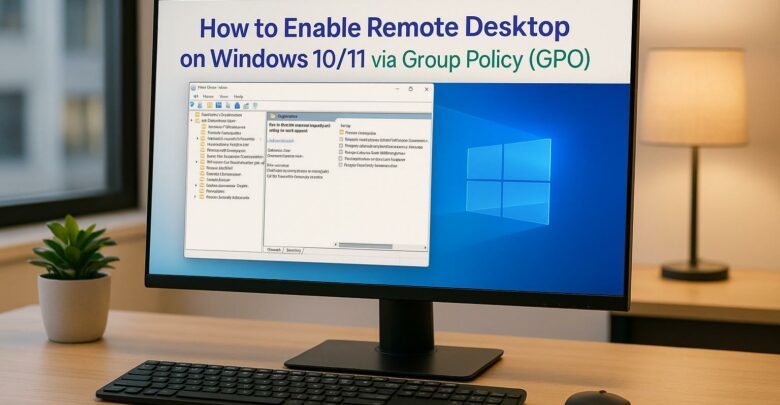
Learn how to centrally enable Remote Desktop on Windows 10/11 using Group Policy for efficient management and enhanced security.
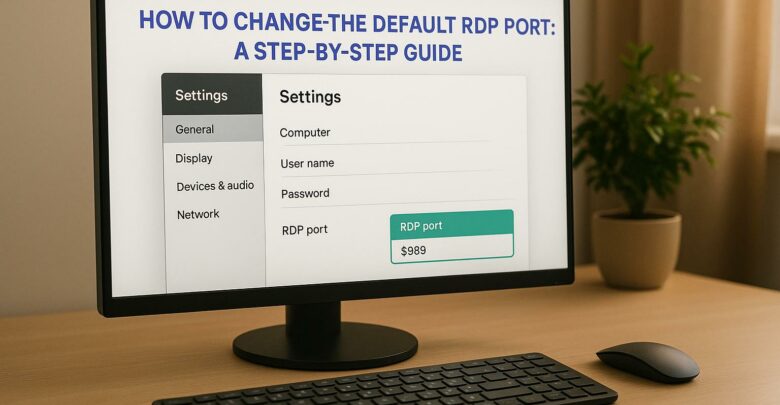
Learn how to change the default RDP port to enhance security and reduce exposure to attacks. Understand the limitations and necessary precautions.
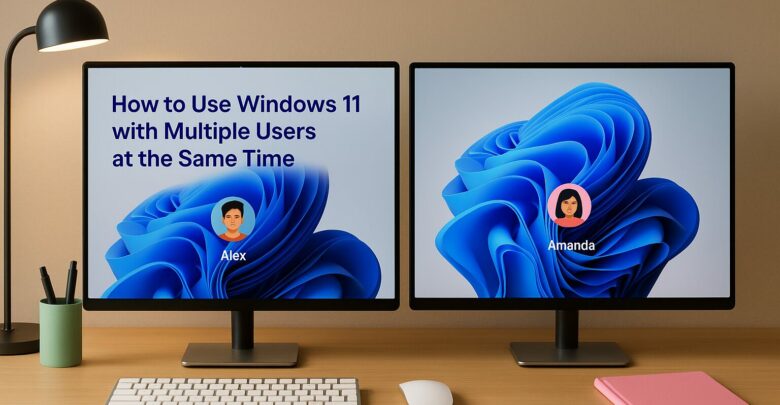
Learn how to enable multiple user sessions on a single device using a managed solution that simulates a Windows 11 experience.

Explore how GPU-accelerated virtual desktops are revolutionizing architecture firms by enhancing collaboration, reducing costs, and improving rendering efficiency.
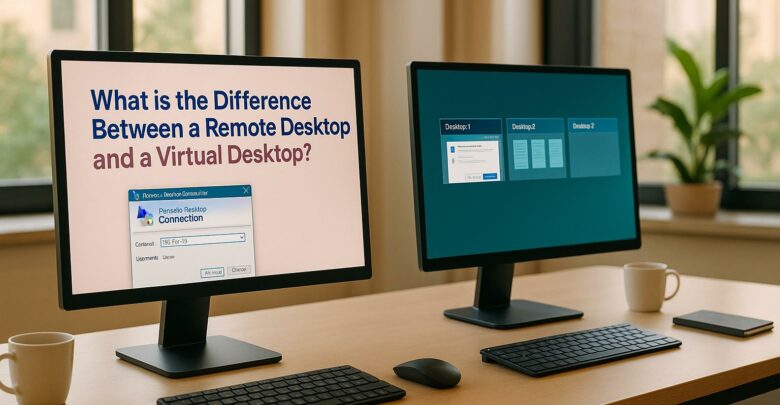
Explore the differences between remote desktops and virtual desktops, their pros and cons, and which solution best suits your business needs.

Learn how cloud latency is affected by data center location, compliance laws, and infrastructure, and discover strategies to enhance performance.
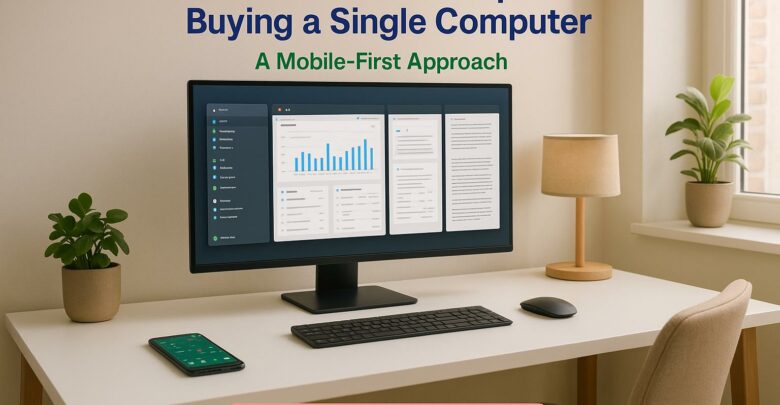
Launch your startup without hefty hardware costs using virtual desktops for flexibility, scalability, and enhanced security.
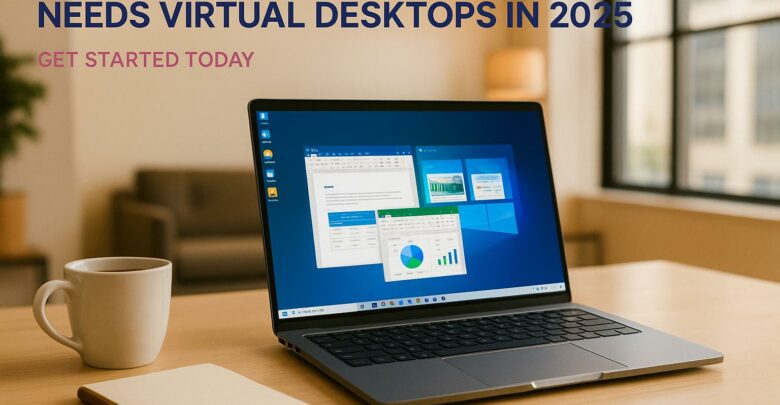
Virtual desktops are essential for small businesses in 2025, reducing costs, enhancing security, and supporting remote work flexibility.
